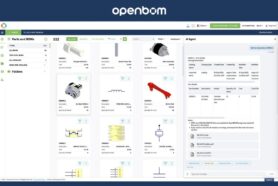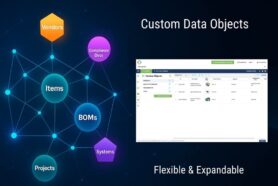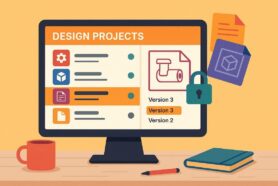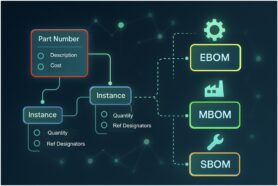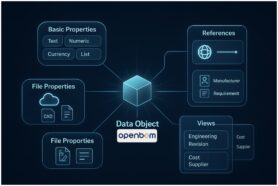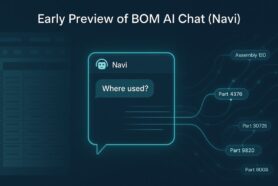
As a manufacturer, it is important to be aware of the various software components that are used in your products. Managing the BOM (bill of materials) for these components is critical in ensuring that you have an accurate overview of your product and can track any changes or updates to those components. As manufacturing products are getting more complex, failure to manage software components included in a manufactured product can lead to many issues both economical, regulatory, and security-related. In this blog post, we will discuss the importance of managing your BOM for software components and offer some tips on how to do so.
Why and How To Manage Software BOM?
In a modern manufacturing world, manufacturing companies are turning into software companies. There are two reasons for that. First, products are getting super complex and include many software components as well as mechanical and electronic components. To manage all software components software is required, otherwise, you will just get lost in matching the right software versions to hardware versions. It is complex in development and even more complex in maintenance and upgrades. Security and regulation are one of the biggest factors to improve software BOMs. The second reason is that software is used as part of the business model by supporting sales, subscriptions, and many other elements of business offering – combining data, and optimizing sales and marketing.
How to manage software BOM? The concept of software BOM is not very different from manufacturing or engineering BOM. It is a list of components (items) that can be associated with specific software modules. Companies can manage these items including all specific information related to this software. It is not only related to internal company development but also numerous open-source software components. It is essential to create a full list of software modules and dependencies. The information you need to track is usually a component name, license information, version, vendor, etc.
To manage software BOM reduces the risk for both manufacturing companies as well as customers. When a customer can get a full list of software dependencies, it helps to understand risks and what manufacturers are using.
Although ALM software is not new and PLM companies were looking after them for quite some time, I found a “software BOM” is important and is on the rise for many organizations and industries.
Benefits of Software BOM Management
There are many benefits of Software BOM and I’d like to highlight some of them that might not be obvious to people usually dealing with PLM and related engineering and manufacturing software tools.
- Cost
To manage software BOM requires time and if a company missed the need to manage BOM it will hurt them downstream in manufacturing, regulation, and security testing because this work will be needed and it will take time to create one.
- Security and compliance
The security risk is very high and consumers are paying close attention to security, especially with consumer products. To answer some regulation and compliance questions, you need to have access to all software components, so you better have one.
- Supply chain resilience
Both security and regulation lead to significant supply chain risks when shipping products including software. The software must be updated and a manufacturing vendor must disclose sufficient information to vendors. Surfacing issues early in the process can help a lot.
How to manage Software BOM?
Management of software BOM will be a breeze for everyone who wants to do it using OpenBOM because of these six main reasons:
- Catalogs
A flexible data model allows for the creation of all required properties, including links to JIRA, hold GitHub build numbers, and components. Data flexibility is a key and this is what OpenBOM does brilliantly. You define multiple catalogs to store information about items and one of them can be a “Software Items” catalog that will hold all information about all software components. It is flexible, so you can get even more granular.
- OpenBOM product structure, where used queries and dependencies
OpenBOM allows multi-level BOM to be constructed level-by-level. You can do it top-down and also bottom-up. So, at any moment in time, you can capture a list of software components and add them to any assembly level in the existing BOM. OpenBOM will automatically build a hierarchy – thanks to robust infrastructure using Graph Databases and will provide you a “where used” queries to manage traceabilities.
- Revisions and History
OpenBOM revision management provides a way to control a full history and record of all components changes. It solves all problems related to traceability and regulation needed for SBOM data management.
Conclusion
Not managing software BOM introduces a big risk in any product development these days. To have a proper product lifecycle management software that can manage software BOM integrated with needed business processes is an essential business practice for manufacturing companies these days. To have an ability to combine engineering BOM, manufacturing BOM, and maintenance BOM and to include software components in all these BOMs will pay back many times. This is where the digital thread begins. Regulation and compliance requirements are becoming more strict and companies will be forced to implement Software BOMs as part of company product lifecycle management.
OpenBOM supports Software BOM management seamlessly and combines a finished product BOM by helping coordinate and collaboration across multiple manufacturing teams. In such a way OpenBOM supports product data management and manufacturing resource planning functions with embedded software BOM exactly in the same way as computer-aided design tools helps you to manage engineering bill materials and manufacturing bills. OpenBOM document management functions help to connect software information to the entire set of raw materials of the product.
REGISTER FOR FREE to check how OpenBOM can help you. Start a free 14-days trial today.
Best, Oleg
Join our newsletter to receive a weekly portion of news, articles, and tips about OpenBOM and our community.



